24/8/2015
The time finally came to properly use my new Bad Axe tenon saw. As you can see in the pictures below, I used it to cut the massive tenons of the long stretchers. It was quite easy to cut with the aid of the saw horses that held the stretchers at a comfortable hight. The saw wasted no time on these cuts as it has a fairly aggressive tooth geometry.
The shoulders were done with a Lie-Nielsen crosscut backsaw. You can appreciate the surface of the tenons after the sawing (second and third picture below).
I added these two pictures to show a trick I discovered by accident. The row of dog holes along the front edge of my bench that operates in tandem with my quick-release end vise has two areas where a couple of holes are missing due to the placement of the leg. When I have a piece of timber that is of that particular length, it is a bit of a hassle to find a scrap piece of wood as a spacer in order to pinch the timber between dogs. The other day I realised by shear luck that my Veritas Wonderdog can solve this problem without much fuzz.
I then used a Stanley no. 10 rabbet plane to shave the tenons down to it’s exact size. You will notice how it also improved the surface of the cheeks (which is the important glue surfaces of the joint).
Here I am chopping the shoulders to the knife line.
I am not sure what this dimension of the tenon is called (?edge maybe?), but I trued it up with a pairing chisel and block plane.
Before reassembling the bench in order to mark out the correct location of the mortises of the long stretchers, I drilled the holes through the top that will accept a bolt to fasten it to the apron. The idea being that I could then use that hole to mark the exact location of the corresponding hole through the apron, while the bench is assembled.
Here you can see the bench assembled. The aprons are in their correct position, but the short stretchers sit at the top of the legs in order to line them up correctly without being in the way of the longstretchers.
I usually use these batons to located the exact position of the stretchers, as referenced off the apron’s through tenon.
The following two pictures might help to explain how the short stretcher’s tenon (traced off in pencil on the leg) will eventually pass through the long stretcher’s tenon to also become a through tenon that can be wedged. I got this idea from some Japanese joinery I saw some time ago and is one of very few subtle changes I have made to the design compared to my first bench.
With the holes for the bolts marked out on the aprons, I could drill them out after de-assembling the bench once again. I started with a 40 mm hole that will accept the massive nut. I used a Forstner bit (in the drill press) as it creates a flat bottom for a washer (plus I simply did not have a big enough bit for my brace). That was followed by a 1″ Irwin auger bit to allow for some wood movement as I will use a 20 mm threaded rod to produce my custom bolt.
I tried to copy (unsuccessfully) my friend Jonathan’s excellent photo of the in side of a rubbish bin. Check it out on his superb site by going here.
Marking out the mortises for the long stretchers.
Here I am drilling the set of dog holes along the front edge of the top and at the far end drilling out the waste from the mortises in the legs.


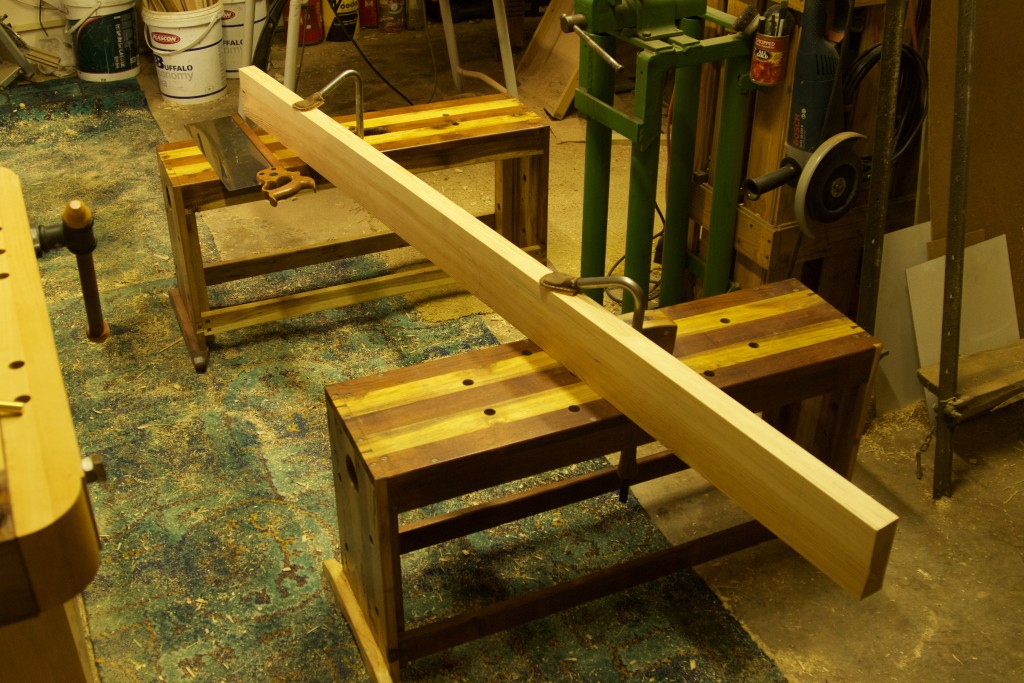
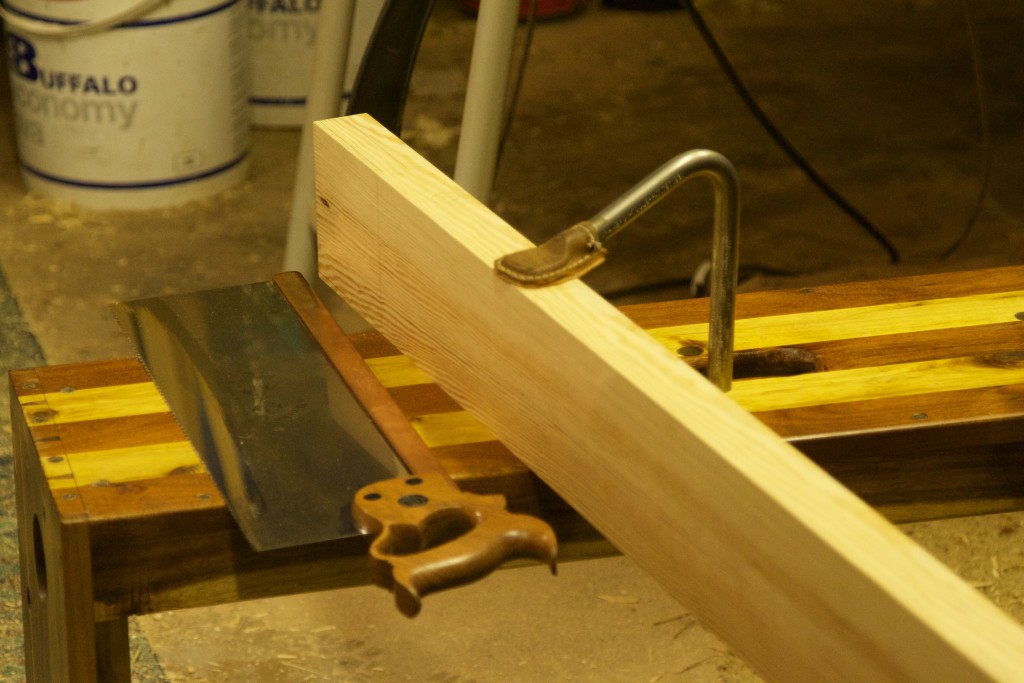

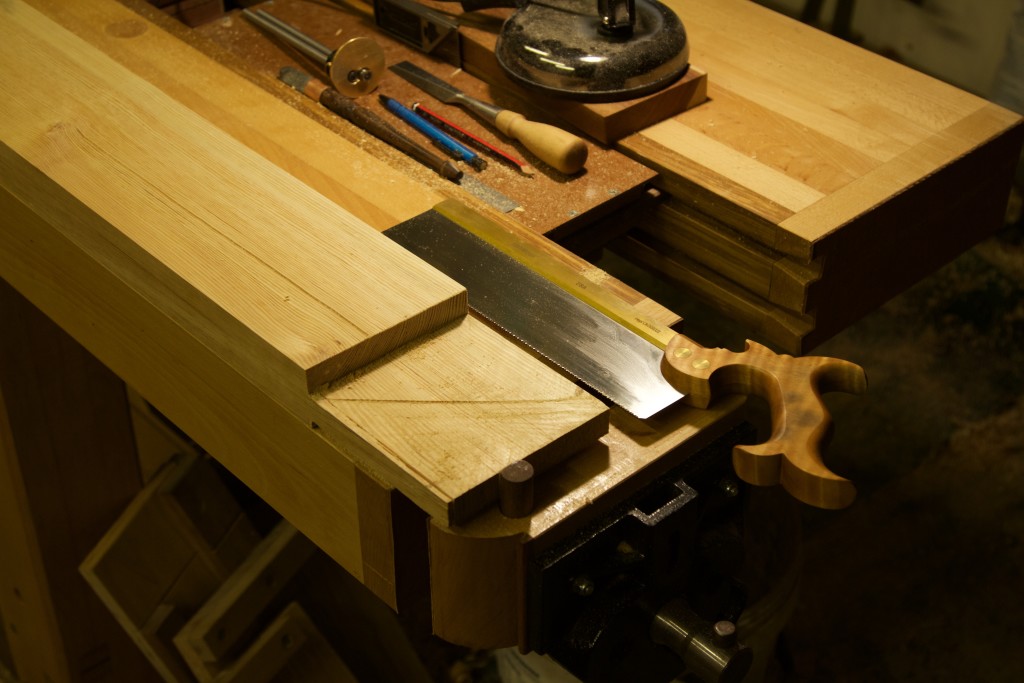
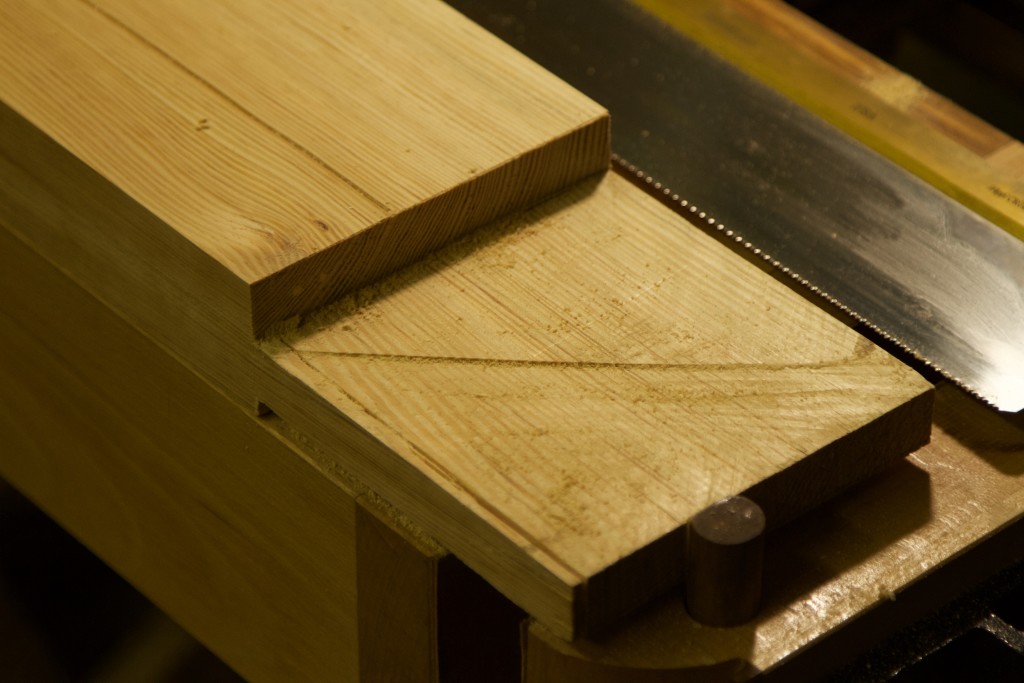

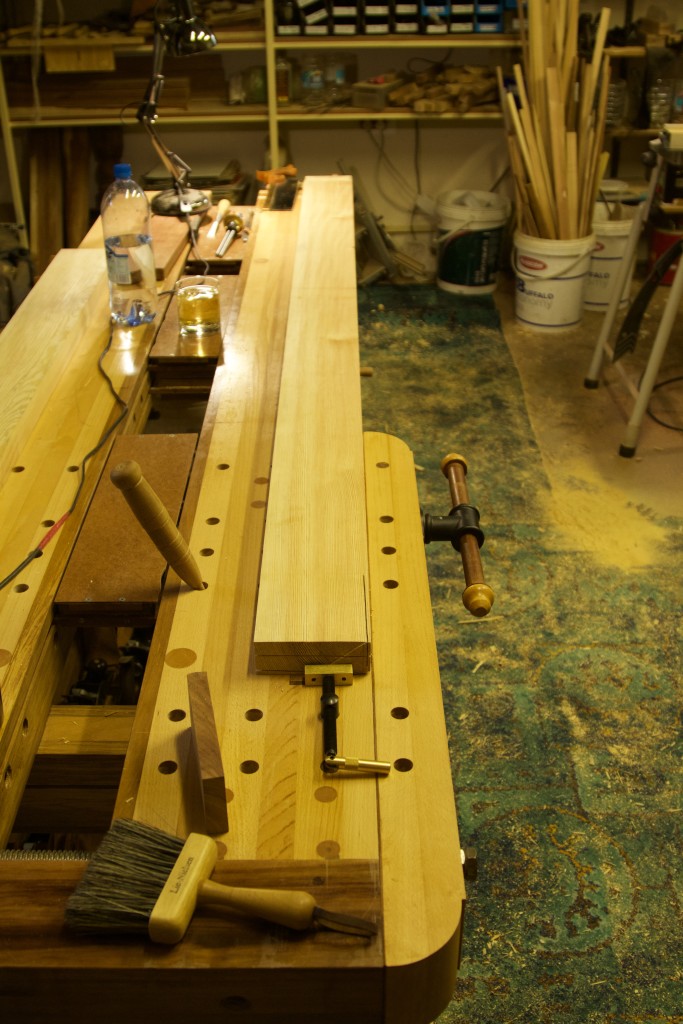
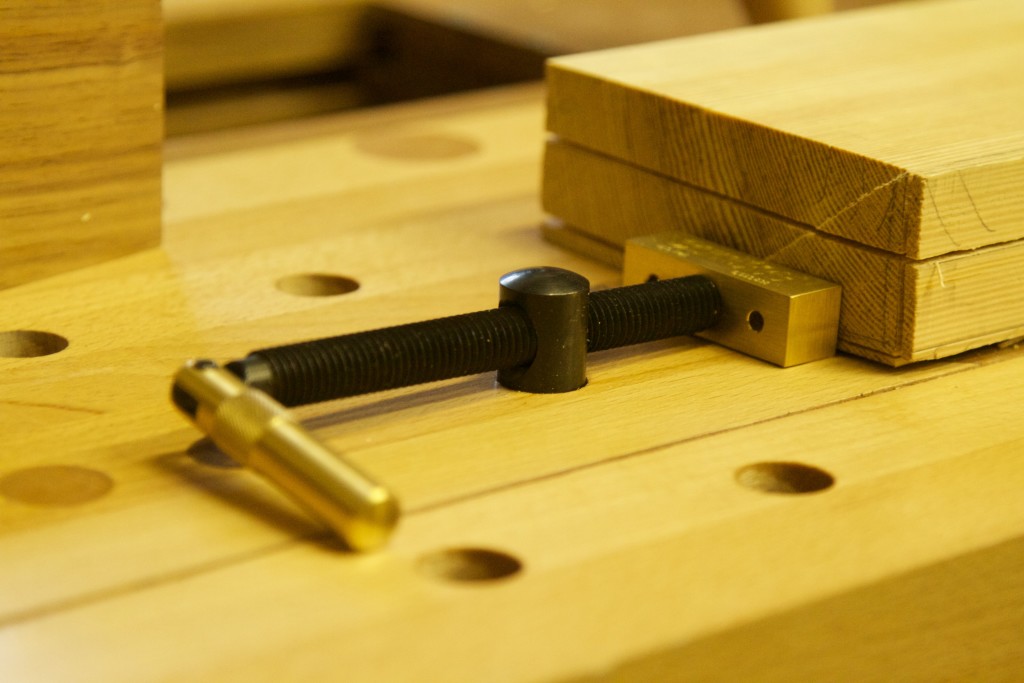
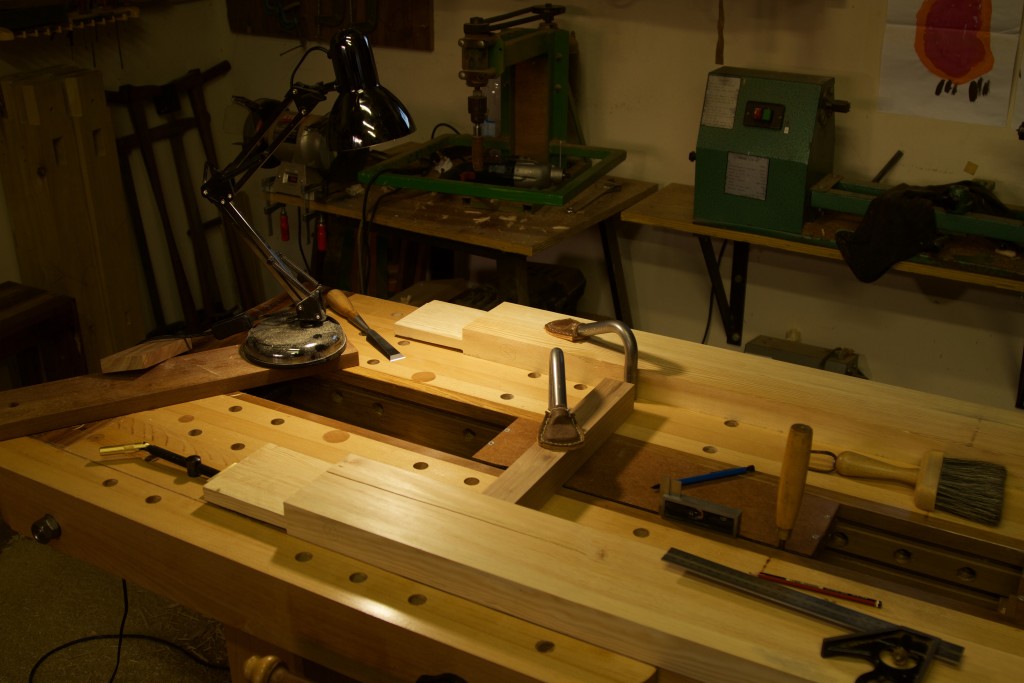
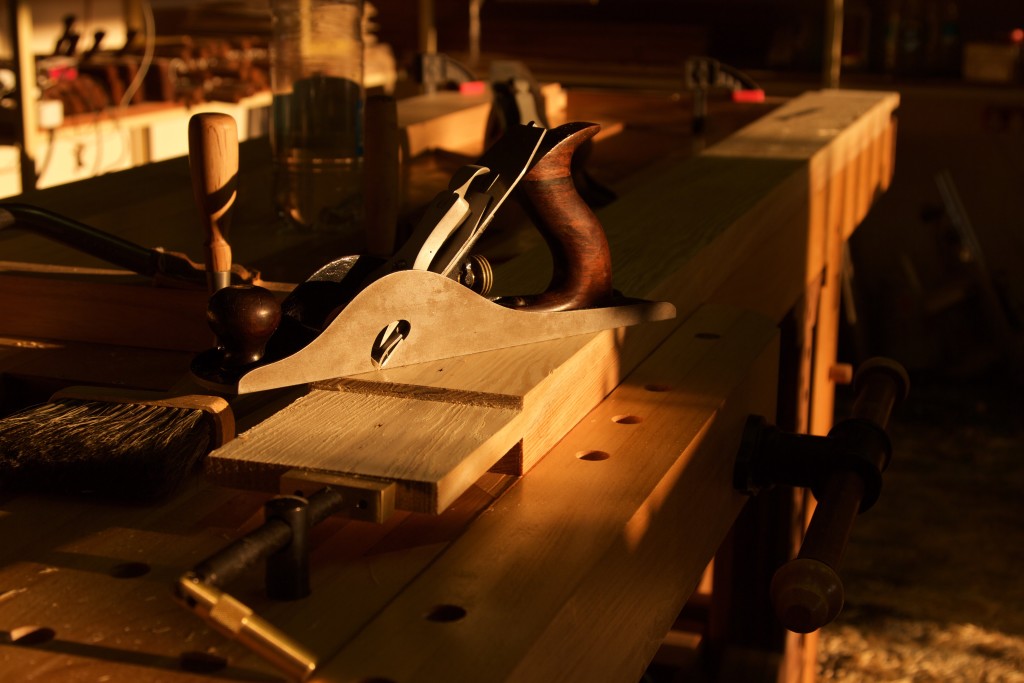



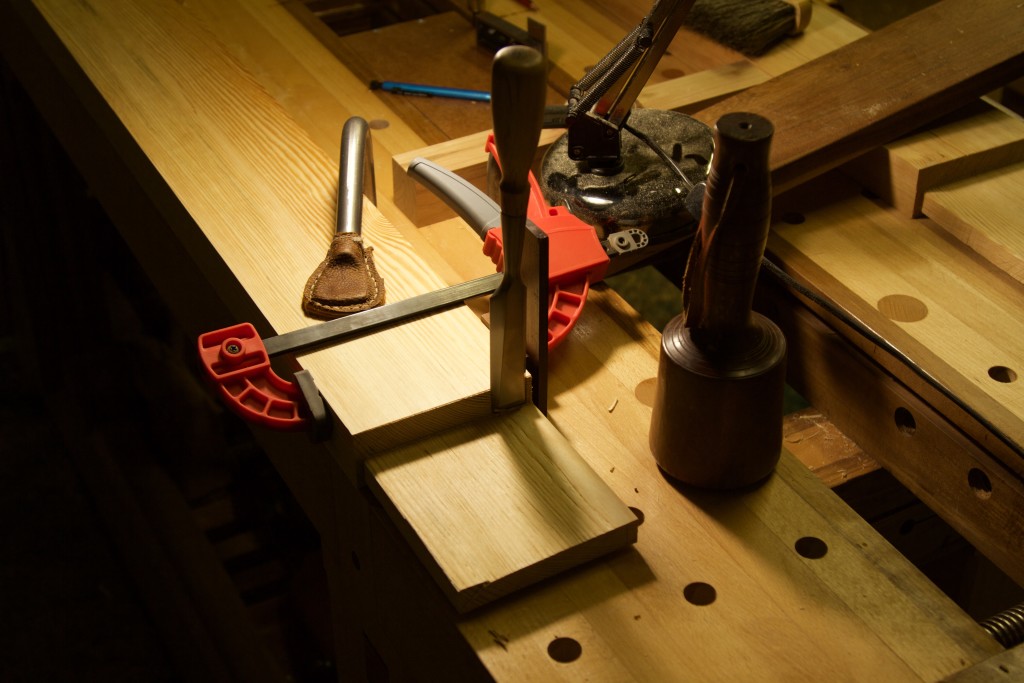

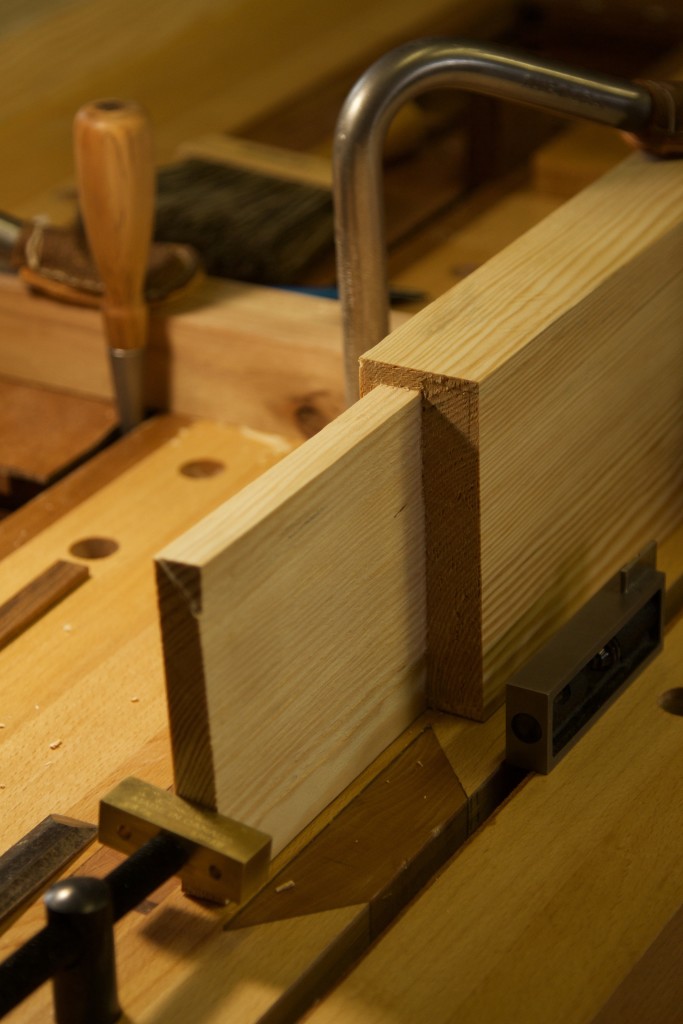



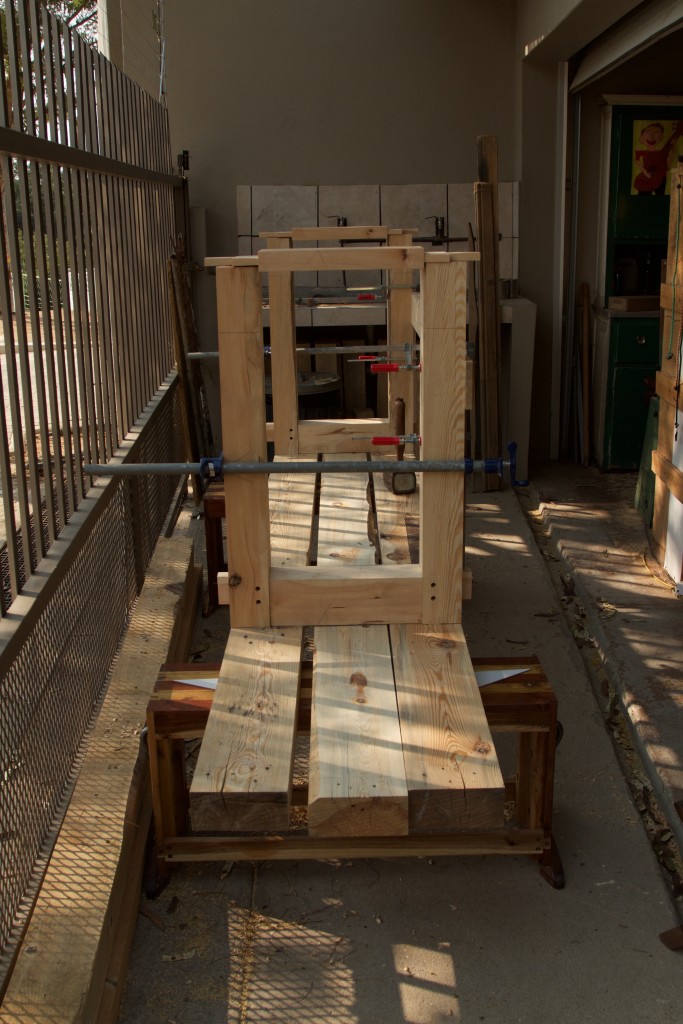
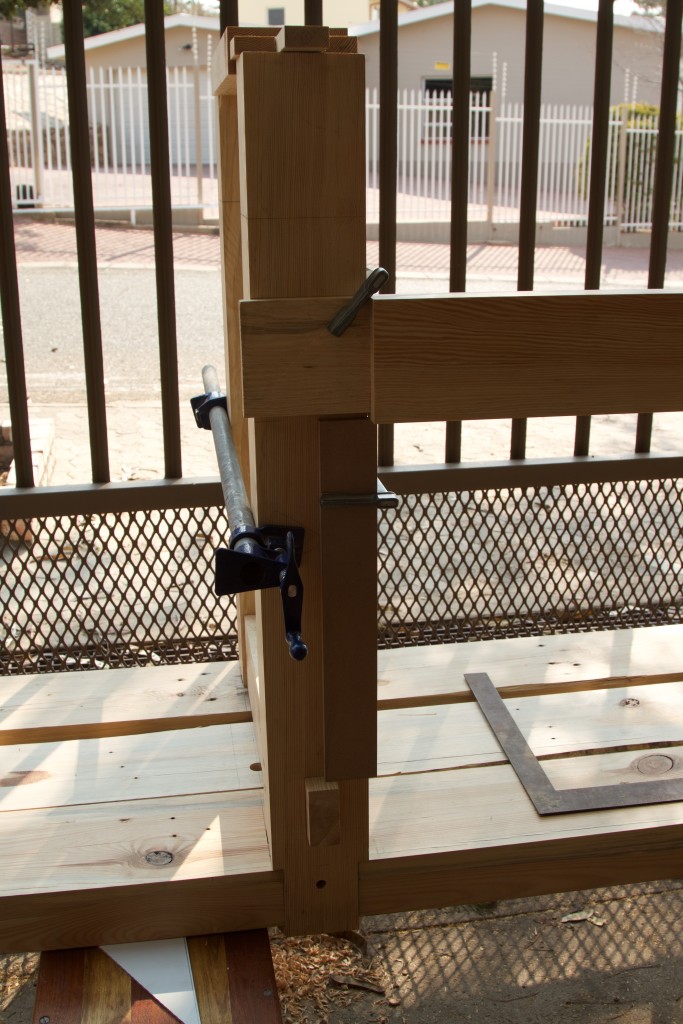
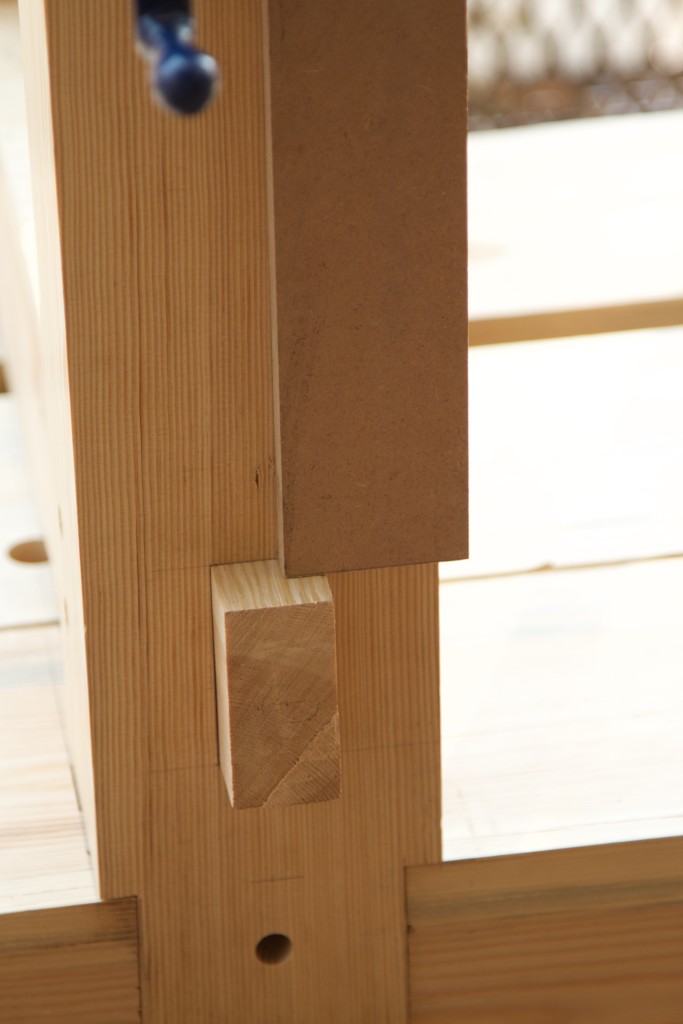
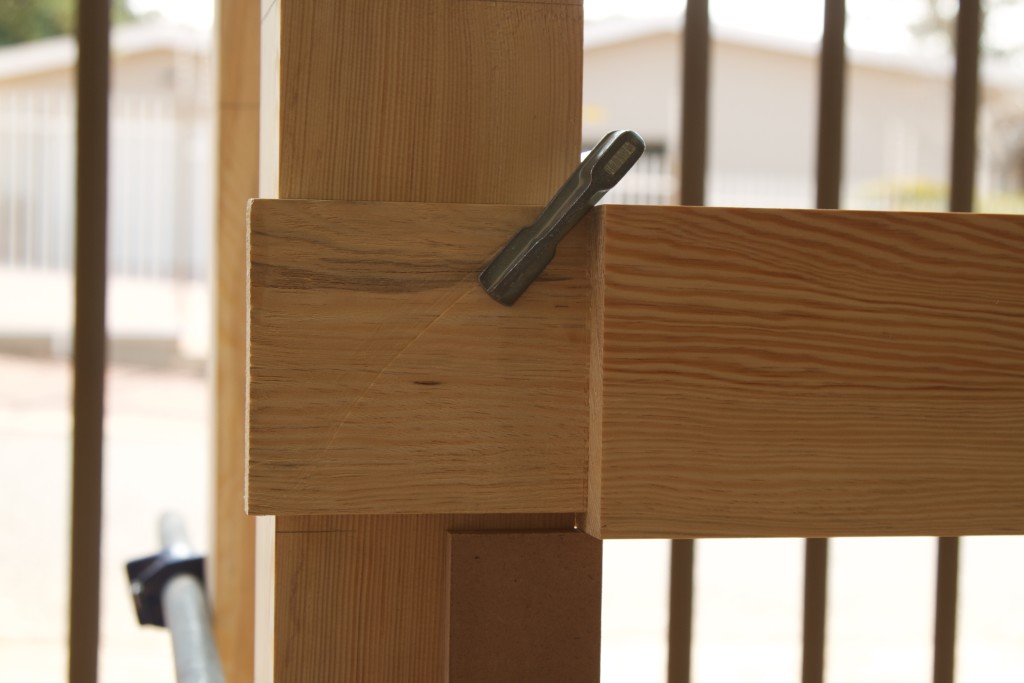
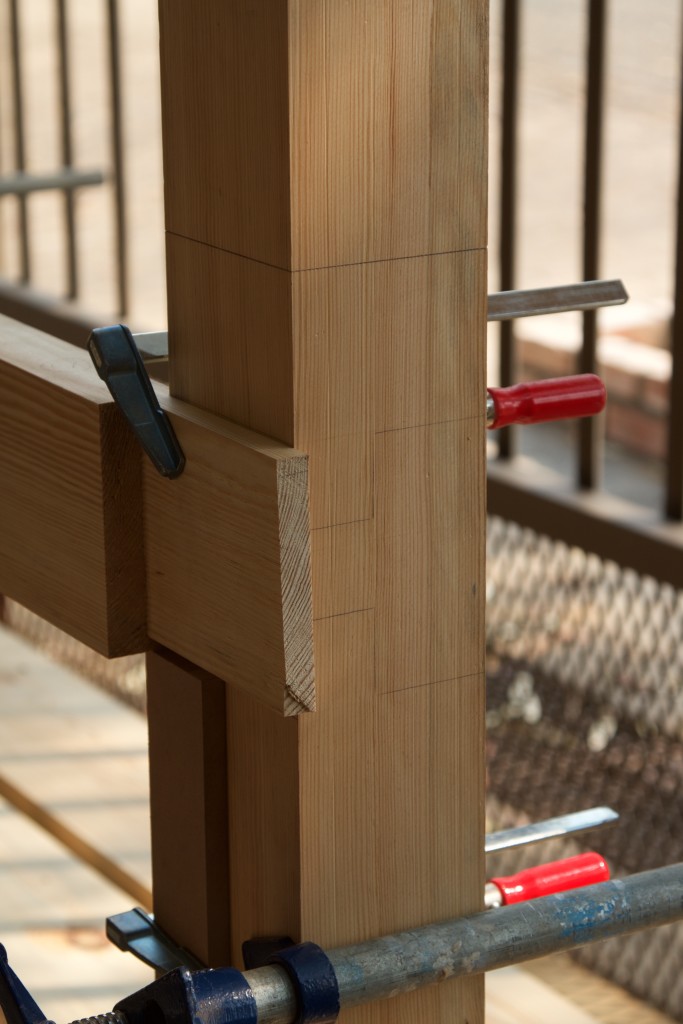
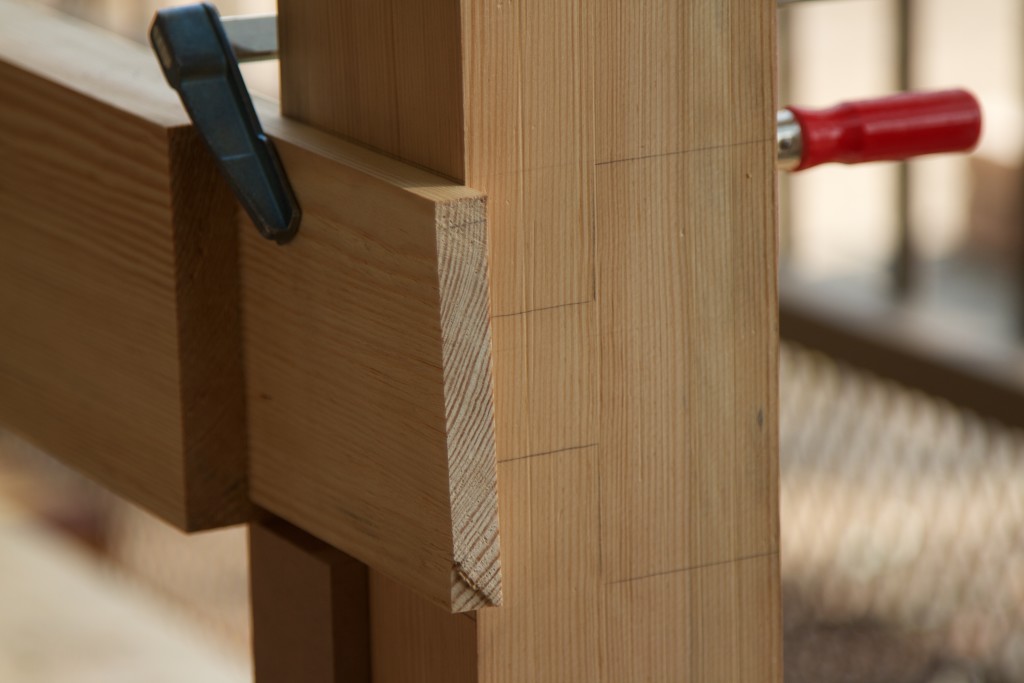
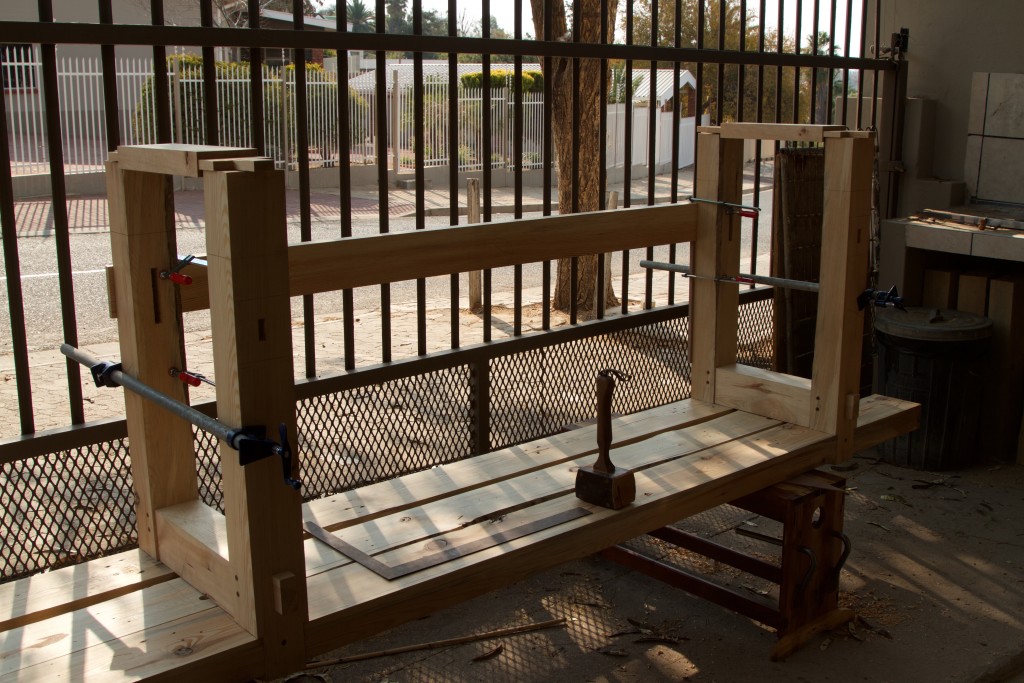
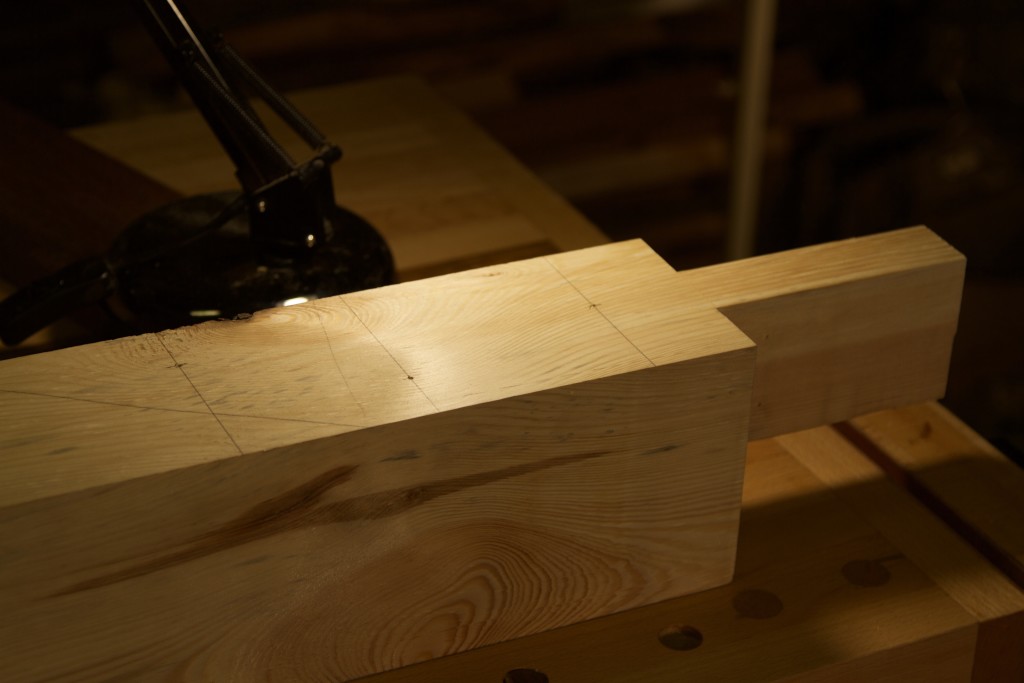
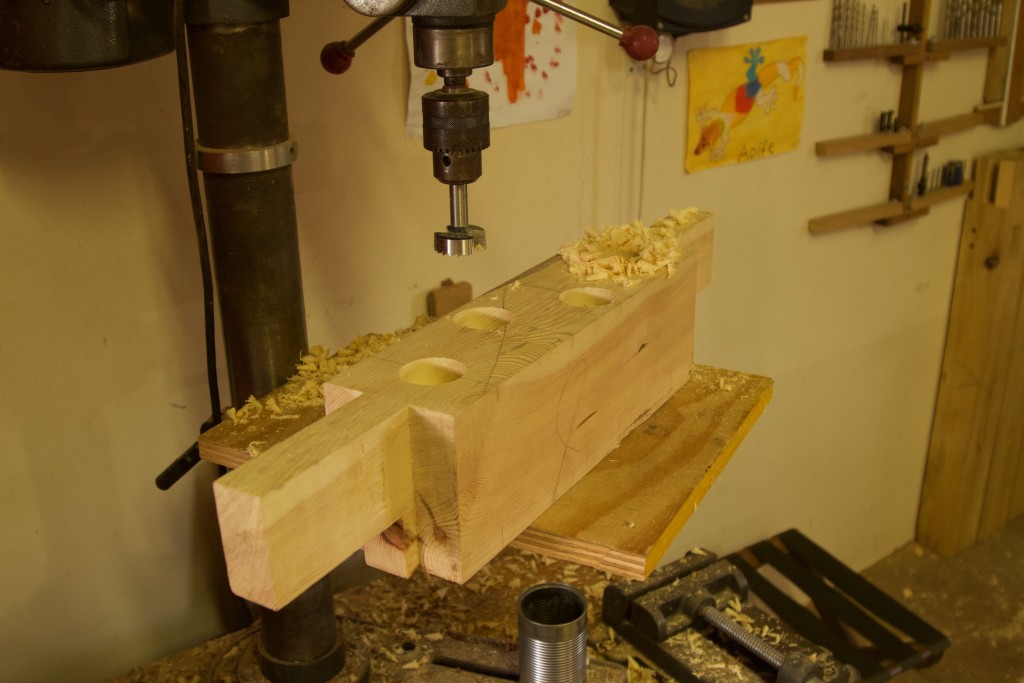
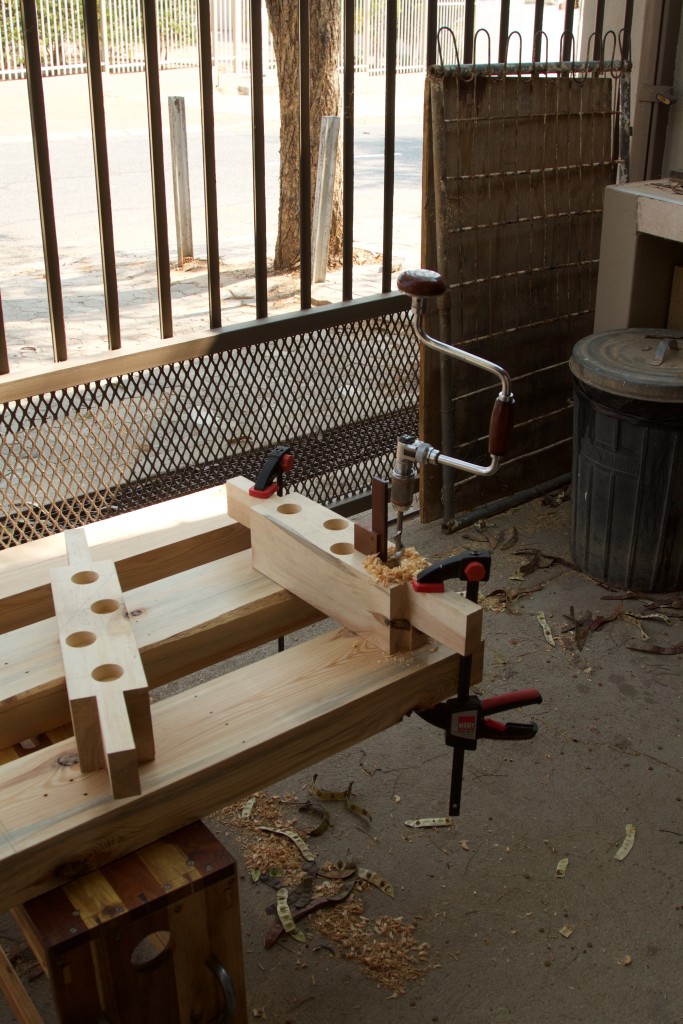
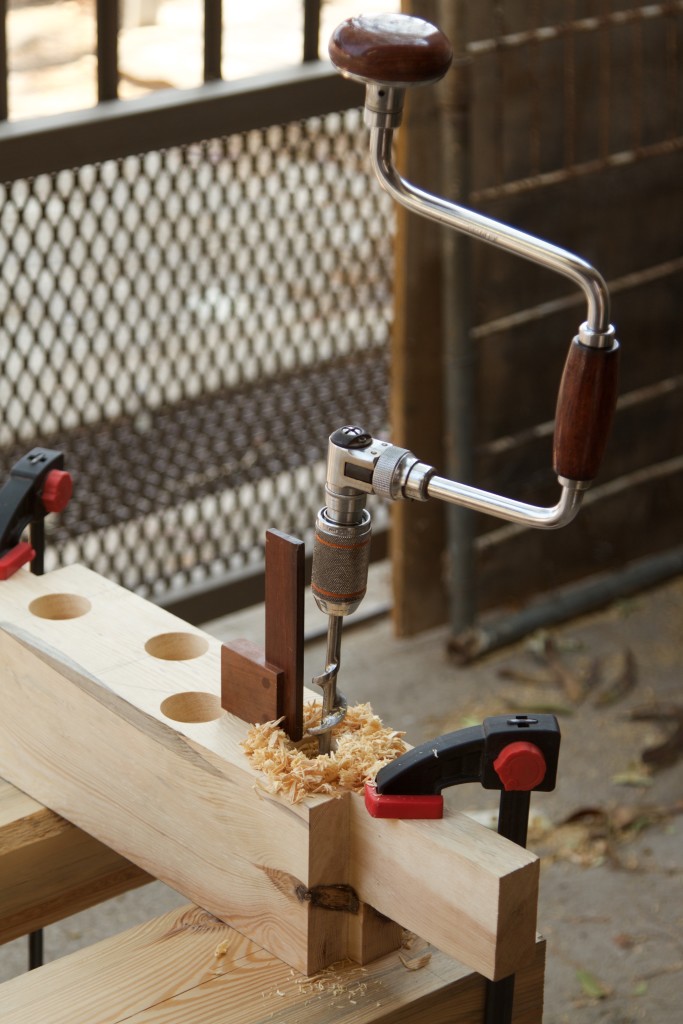

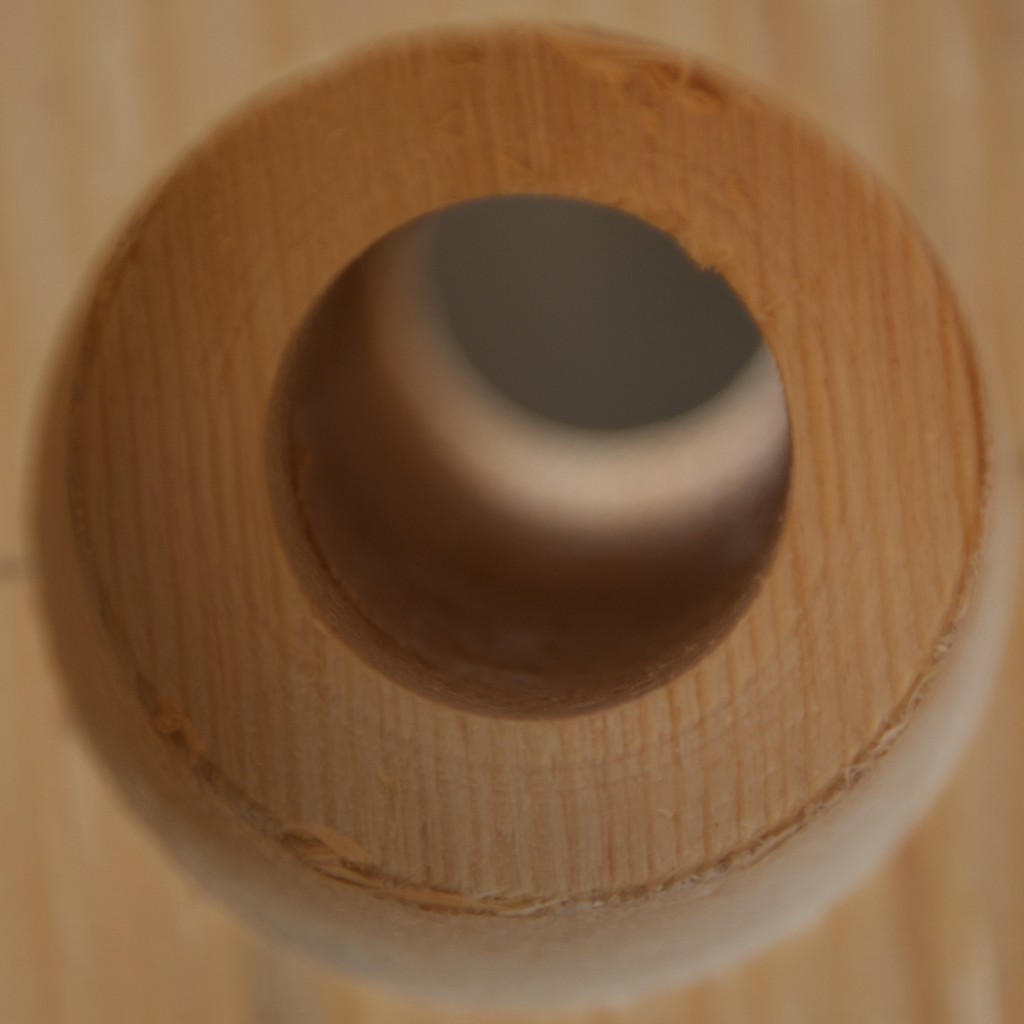
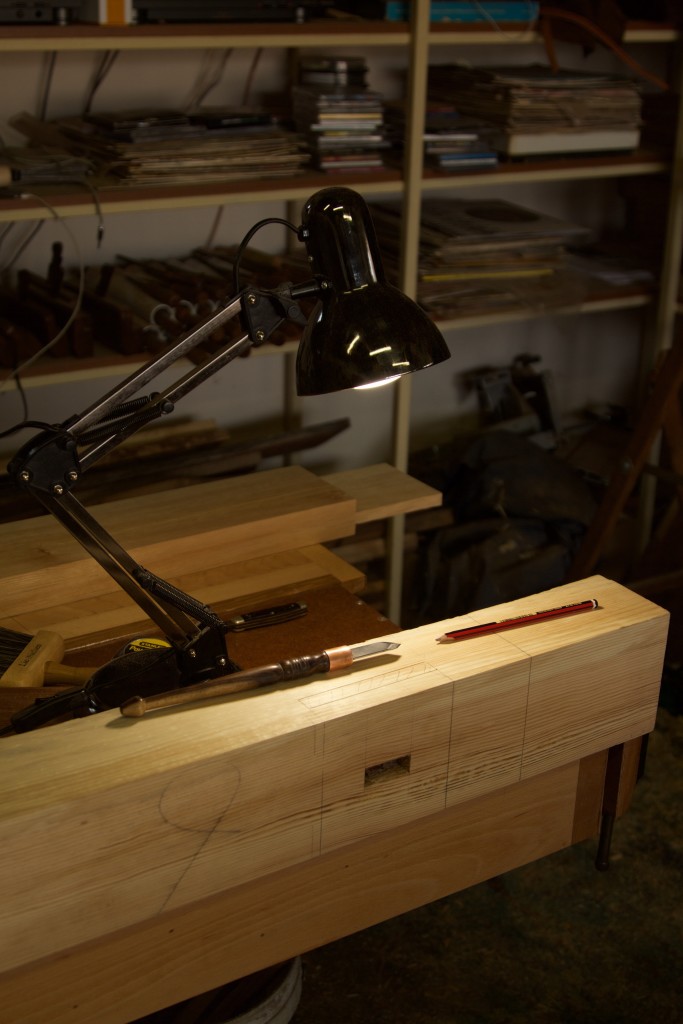
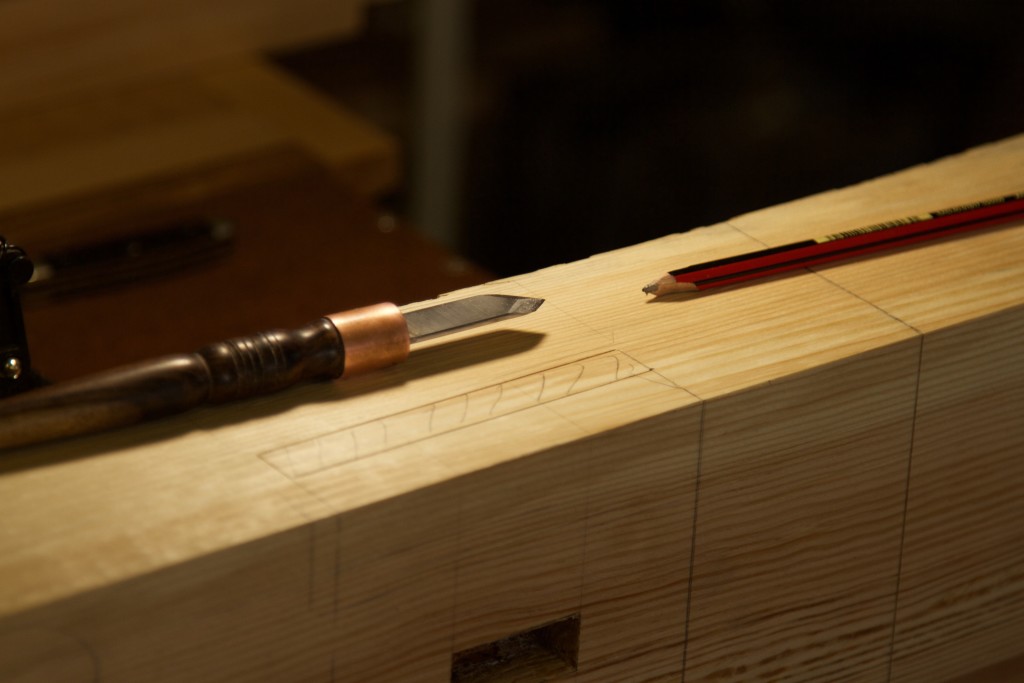
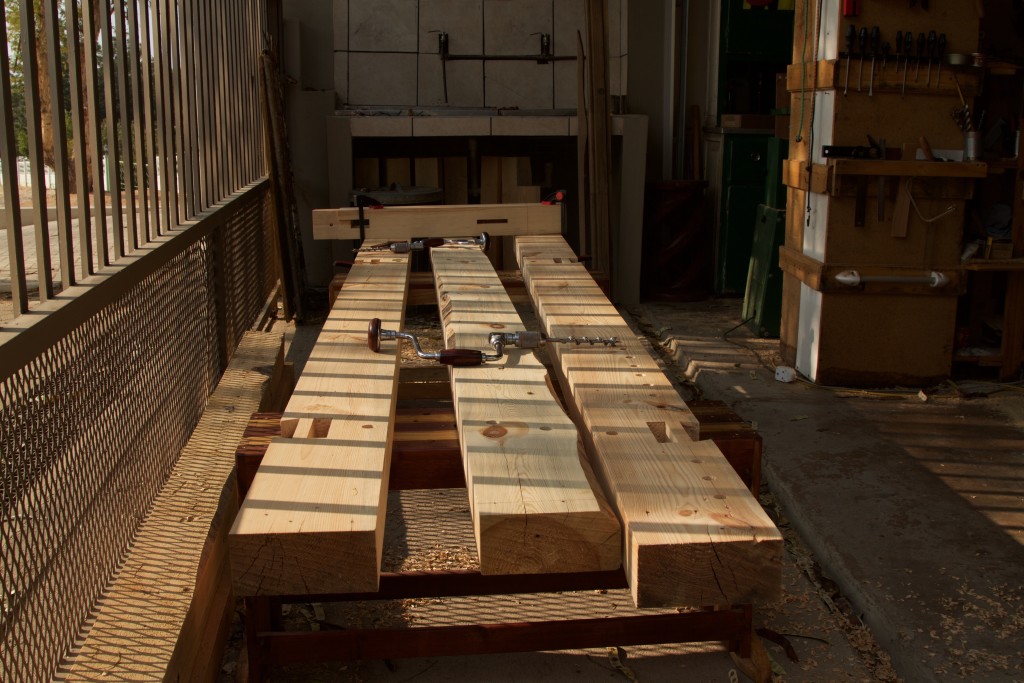


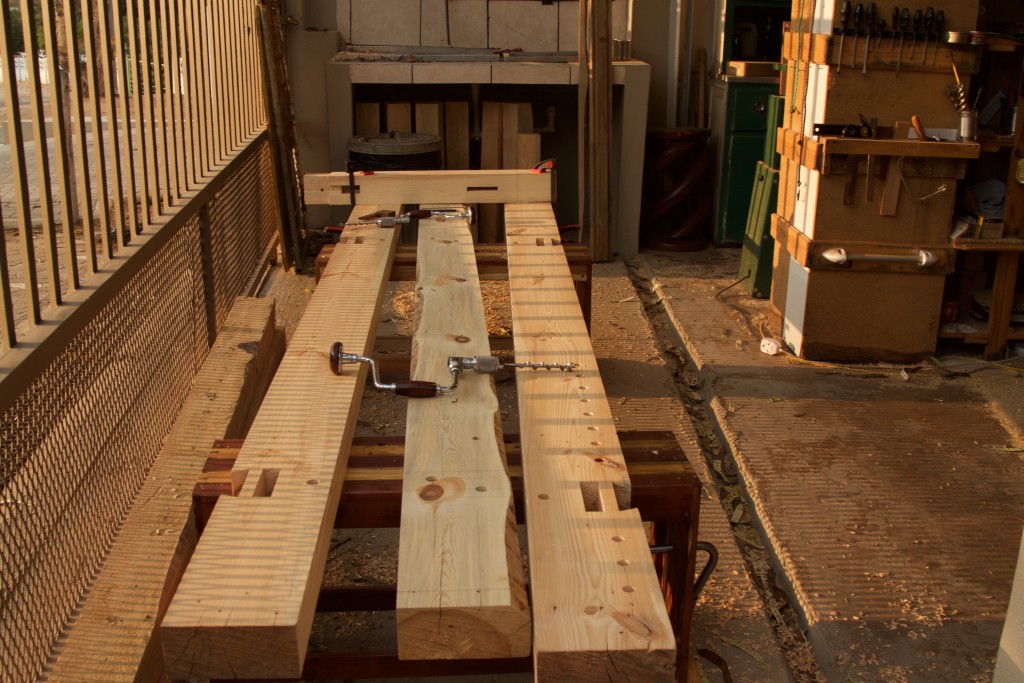
Hey Gerhard,
Another great post! Your mortises all look so crisp and neat, I wish I could cut mine like that. This bench is going to go together like a piston when you do the assembly. Are you sure you’ve lest enough room for glue. 🙂 🙂 I know how hard it is to keep your lines that neat when working with wood that has such strongly alternating hardwood/softwood growth rings.
Oh, and I love your #10 plane. I’ve yet to find one of those in the wild, but I’ll keep my eye open.
All the best,
Jonathan
Hi Jonathan
In the first place I want to apologise for being slack with commenting on your coop build posts. It looks fantastic! Have you done any research on the type of chickens that will thrive in your climate and that particular setting?
Thank you for the comment on the bench build. I have realised a while ago that it will only do duty as a sharpening station for a short while. We are planning to do some alterations to the house next year and part of that will be an extension to the shop that will almost double it’s size. Once that is done this will become another workbench, but I plan to keep it fairly simple as my first bench has enough bells and whistles.
Have a wonderful day and good luck for the rest of the coop project.
Gerhard
I just love those little leather booty on the pads of the hold fast, brilliant idea. So much handy compared to the usual piece of scrap wood and always present!
You made those?
humm if only I knew someone with a sewing machine..or two or…:-)
I thought it was a tad on the overbuild side for a sharpening bench, but since you plan on turning it into a workbench, make perfect sense.
Keep your stick on the ice (typical Canadian hockey joke, meaning stay focused and grounded)
Bob
Hi Bob
It is always nice to hear from you. Yes, I figured that the joinery for a small and a massive bench would be about the same amount of work and it is very difficult to get wood in these dimensions over hear so I might as well make it as big as possible.
Those boots work very well and I see that it is getting a lot of attention on my site’s stats. I used a very simple leather punch for the holes and hand stitched the boots on to the holdfasts. I am sure you will be able to do it yourself.
Thanks for your comment.
Kind regards
Gerhard